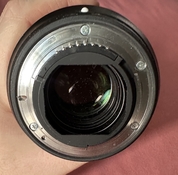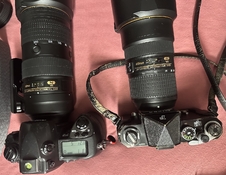It's unfortunate that Nikon has used the "E" designation for two different, unrelated lens types.
"Series E" lenses were, as you show, the budget lenses originally designed for the Nikon EM, but fully compatible with all Nikon bodies capable of coupling to AI-S lenses. They made liberal use of plastic(compared to contemporary Nikkor-branded lenses-they have a lot of metal compared to many modern lenses!), used simple optical designs, and omitted the coupling shoe for earlier non-AI meters.
The E lenses we are speaking of are more modern, and eliminate all mechanical connection to the camera. As said, they are not totally irrelevant for discussion here because, even though they are digital era lenses, you can put them on any F mount camera you desire. On fully mechanical cameras, the lens will remain wide open, but exposure will still be fine since that's also how the camera will meter. Electronic cameras will be fully aware that they can not stop the aperture down, so every exposure will still be correct. Late film cameras like the F5, F6, F100, and N80 will still autofocus fine and will get VR. The F4 will meter and expose correctly(again, fully aware that the lens can't be stopped down) and will operate the autofocus on these lenses.
View attachment 387256View attachment 387257View attachment 387258









